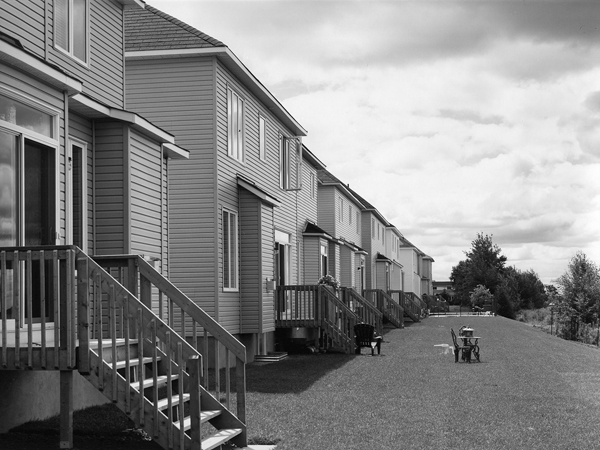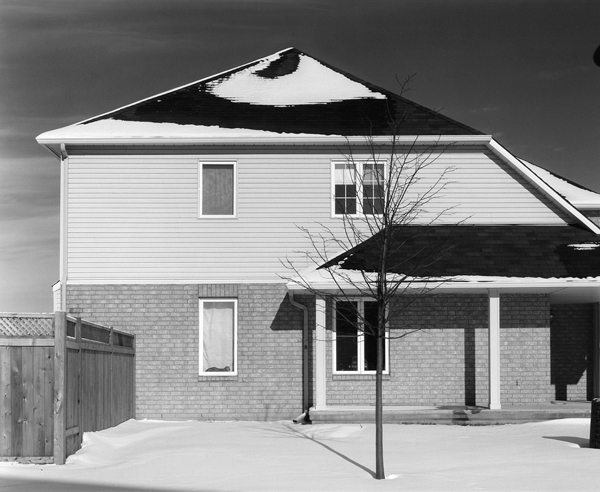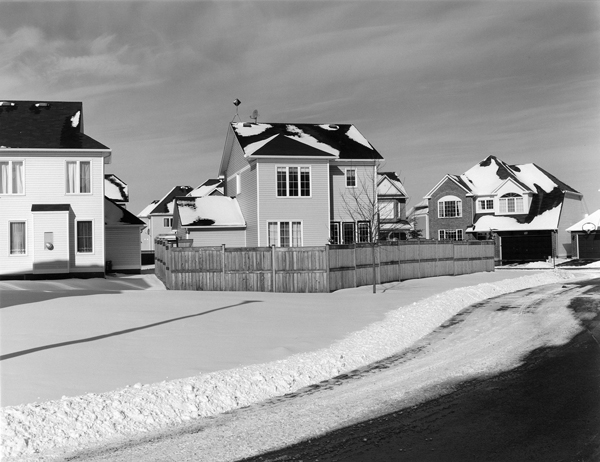other catalogues
(text slightly adjusted, photos are as published)
in
NEWWEST REVIEW May 2002 Issue
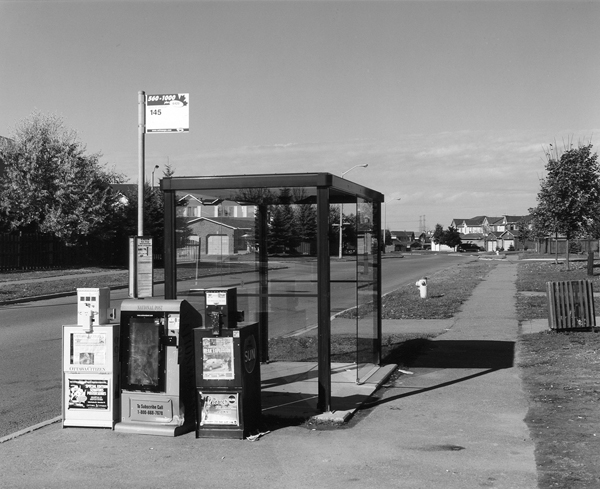
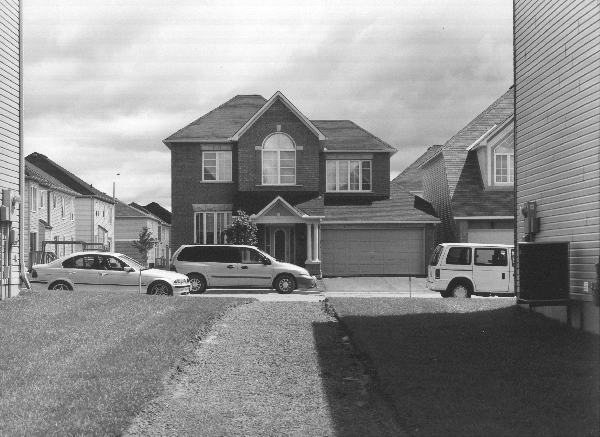
click to enlarge
What possible connection can be made between
photographs and houses? Perhaps we take photographs and houses equally for
granted. There are so many. You just use them as ... Who really ... ? Do the
developers, builders, sellers, town planners see other than economic structures?
Of course they do.
Photography when it is not much more than an illustration of psychological
and social worlds can be spoken of in post-modernist, post-structuralist terms
incorporating a touch of phenomenology, a bit of structuralism, a hint of
hermeneutics, and great gobs of pretty well anything else you care to mention.
The photographs reproduced here have too many possibilities in their grasp.
They can point to family, social, economic and political structures, the good
and the going bad. They point to housing that is a fundamental force,
particularly for the homeless. They might make you think that housing can
structure a way of life, ways of thinking, kinds of conflict, dreams. Housing
can influence oil markets. Houses can burn and leave the most recent occupants
dead or devastated. The notion of housing can create unrealistic, unattainable
dreams. Housing can be a bad dream. Or it can be ...
Contemporary mass-produced housing, and the suburbs it demands, form and
release the stories of individuals, families, and society. Photographs can
contain stories, the stories viewers care to remember, create or anticipate.
Are these houses flimsy? Are they worth living in? They will see murder. They
will see divorce. They will see birth and death. They may see waves of different
classes of people. They may not outlast one generation. They will harbour
anyone. They ...
© denis.wall@ualberta.ca June, 2002
